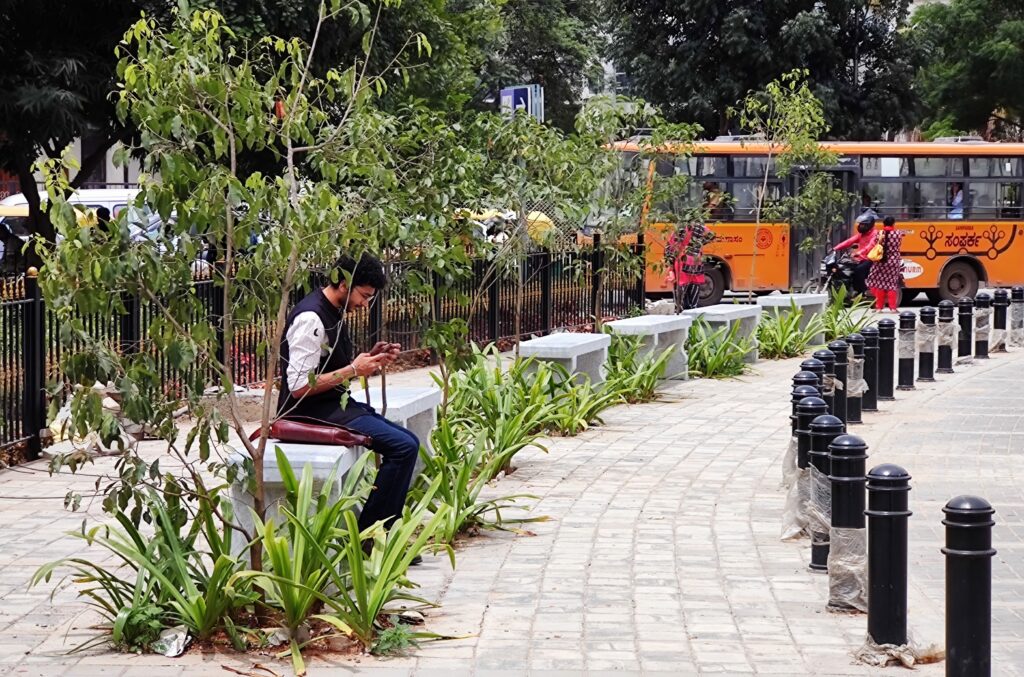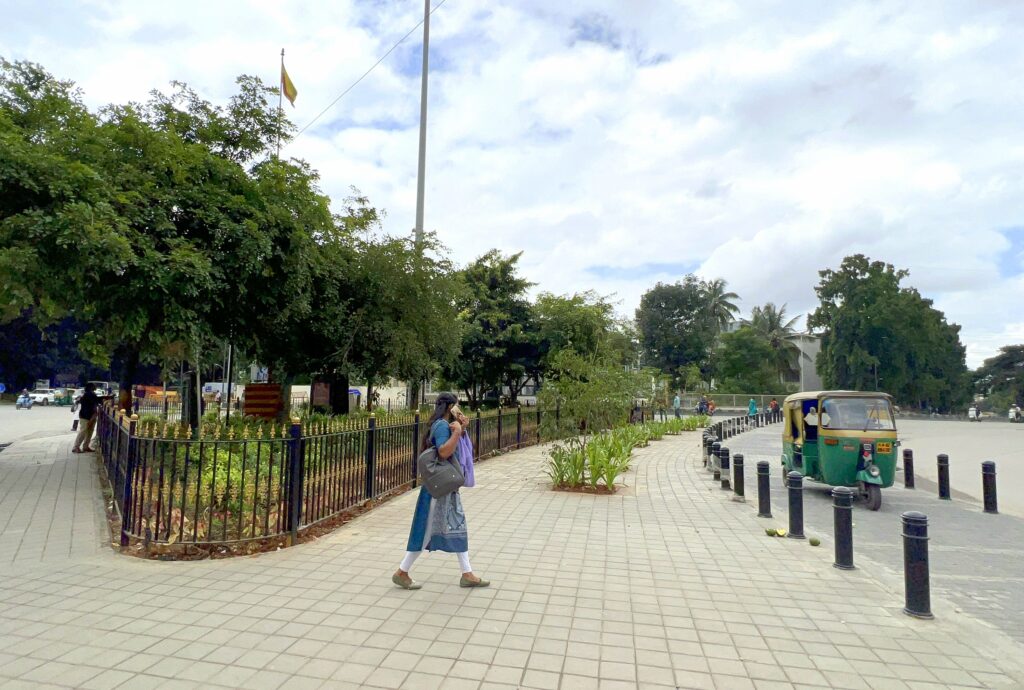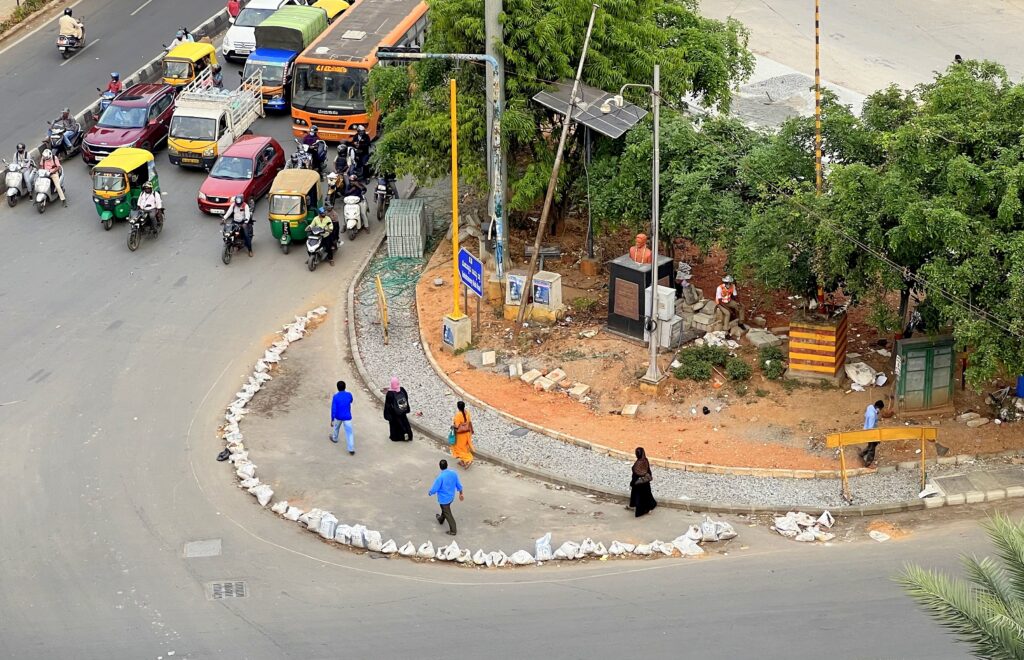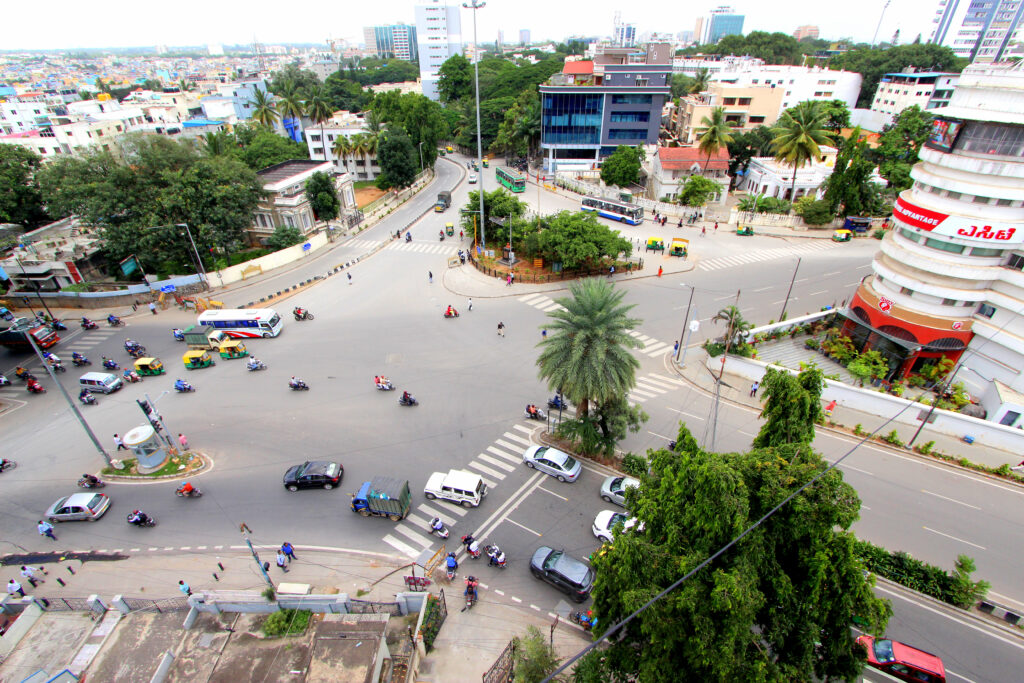
“I find it scary to cross this junction. I literally have to run to save my life,” says Varsha, a resident of Bengaluru in southern India who crosses the Balekundri Circle in the central part of the city every day. “The signal timings are really short, and you won’t even realize it because you are going the other way, so you can’t see the signal really.”
Varsha is one among scores of pedestrians who, until recently, had to run to cross a junction that spread over an acre in Bengaluru’s Vasanth Nagar, home to offices, schools, colleges and a major bus transit node. The junction sees heavy vehicle traffic – 10,000 vehicles during peak hours – and even more pedestrians.
The third-most populous city in India, Bengaluru’s land area is expanding at a rate of 60 square kilometers a year. A 2020 TomTom study named Bengaluru the worst city in the world in terms of traffic congestion, with people spending an average of 10 days and three hours stuck in traffic every year. The city’s huge investments in building flyovers and widening roads has only added to the problem and worsened road safety.
Between 2017 and 2020, more than 500 pedestrians lost their lives while trying to cross roads in Bengaluru, according to WRI India analysis based on preliminary reports. Lack of safe pedestrian infrastructure, especially crossings, results in pedestrians coming into direct conflict with vehicles and risking their lives every day. More than 60% of the crashes occurred at intersections on major roads.
Tactical Intervention
With the aim to make these intersections safer, Bengaluru Smart City Limited and the city traffic police joined hands with WRI India, under the Bloomberg Philanthropies Initiative for Global Road Safety, to redesign the Balekundri Circle into a safer, pedestrian-friendly intersection that works better for all road users.
In February 2022, trials were conducted at the junction for two weeks to test the proposed re-design. The pedestrian plaza was blocked off using sandbags and vehicular movements were recorded. The result? Traffic movement was not obstructed and pedestrians started utilizing the extension. With the successful trial and inputs in place, the Bengaluru Smart City Limited started permanent implementation in March 2022.
The re-design is composed of five key elements:
1. Contiguous Travel Lanes
Travel lanes are the portion of the street exclusive to vehicles. Mis-aligned travel lanes at the Balekundri Circle resulted in haphazard parking and frequent vehicular conflicts. The re-design created dedicated lanes by maintaining equal lane widths throughout the intersection. This helps to prevent conflicts between people and vehicles and improve and organize traffic flow.
2. Safe Pedestrian Crossings
Six dedicated pedestrian crossings have been introduced at critical locations to provide refuge spaces for pedestrians to stop or gather while crossing the huge junction. This also shortens the crossing distances and helps to create a sense of direction for pedestrians navigating the large space.
3. Universal Accessibility
Though not yet complete, ramps have been started for footpaths and traffic islands to make the intersection more accessible for the differently-abled. Bollards at every exit point of the ramps will also prevent vehicles from driving on the footpaths.

4. Pedestrian Plaza
The re-design converted a space with no designated use into a 700-square-meter pedestrian plaza, the size of approximately two basketball courts. The well-lit, green area with seating spaces is used regularly by scores of pedestrians crossing the area, helps direct traffic flows and includes a dedicated auto-stand for easy last-mile connectivity to buses and taxis.

5. Traffic Calming Measures
Traffic calming measures still under construction include raised crossings to reduce vehicle speeds at critical locations, like the slip lane. These will make it safer for crossing pedestrians to reach the pedestrian plaza by separating them from traffic slightly and forcing cars to slow down.

With Bengaluru looking at investing Rs 27,000 crore ($3.2 billion) on infrastructure projects to ease traffic congestion in the city, Balekundri Circle is a successful example of a collaboration between engineers, traffic police and urban designers creating space that is safe, inclusive and accessible to all residents. It can serve as a model for future junction transformations in the city. Safer walking and cycling paths are key to breaking the cycle of ever-growing, more dangerous and more polluting roadways.
Chetan Sodaye is Senior Program Associate at World Resources Institute India (WRI India) Ross Center.
Tanushree Venkatraman is Communications Manager at the Sustainable Cities and Transport Program, World Resources Institute India (WRI India) Ross Center.






